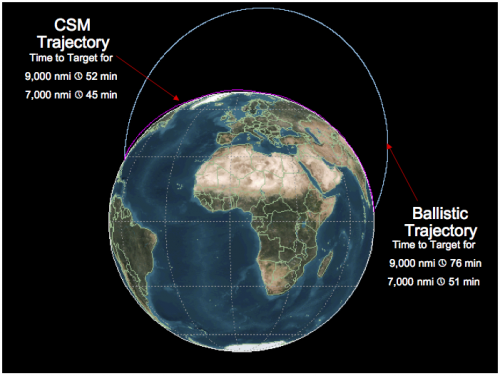It seems to me the issue with using PGS as deterence against an organized rogue nuclear power actually about to use its nuclear weapons are:
1. If the rogue power deploys its nuclear weapon on road mobile TELs, prompt global strike won't be prompt enough. You have maybe 5 minutes, tops, between when the TEL stops and when the missile launches.
2. If rogue power deploys its nuclear weapons in silos, you will have little warning of imminent use, especially if the enemy knows of PGS and avoids tipping his hand diplomatically or through other advance warning signs.
The only time when PGS will work is if the rougue nuclear power deploys its weapons on crude, non-storable, liquid fuelled rockets on above group platforms. Then the preparation required would actually last long enough and be sufficiently visible for you to detect it and attack it in time with PGS.
Admittedly that is currently the level of technology available to North Korea or Iran should they want to launch a nuclear device at the US. But if they are contended with launching a weapon against a regional adversary, they can probably manage some TEL and either storable fuel liquid rocket, or solid rocket.
1. If the rogue power deploys its nuclear weapon on road mobile TELs, prompt global strike won't be prompt enough. You have maybe 5 minutes, tops, between when the TEL stops and when the missile launches.
2. If rogue power deploys its nuclear weapons in silos, you will have little warning of imminent use, especially if the enemy knows of PGS and avoids tipping his hand diplomatically or through other advance warning signs.
The only time when PGS will work is if the rougue nuclear power deploys its weapons on crude, non-storable, liquid fuelled rockets on above group platforms. Then the preparation required would actually last long enough and be sufficiently visible for you to detect it and attack it in time with PGS.
Admittedly that is currently the level of technology available to North Korea or Iran should they want to launch a nuclear device at the US. But if they are contended with launching a weapon against a regional adversary, they can probably manage some TEL and either storable fuel liquid rocket, or solid rocket.


